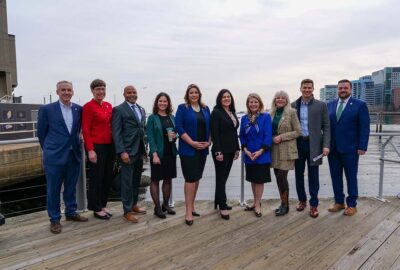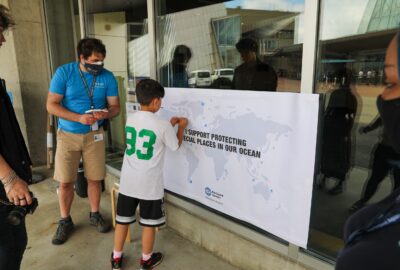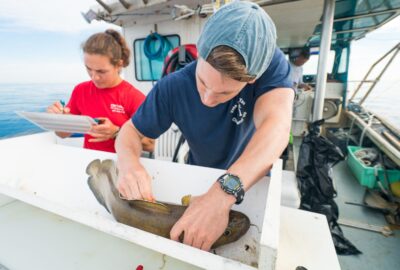Please note: We strongly recommend purchasing tickets online in advance during the heat wave, as our ticket booth is located outdoors.
Understanding Blue Carbon
Blue carbon can mitigate climate change—but what is it, and how does it work? Learn more about the role coastal ecosystems and blue carbon play in reducing global emissions.
By New England Aquarium on Tuesday, January 23, 2024


First: What is carbon, and why is it important? Carbon is an element that makes up a lot of things in nature—it’s often called the “building block of life,” forming part of many molecules, including proteins and DNA. Carbon is also found in our atmosphere as carbon dioxide or CO2. Carbon dioxide traps heat and helps regulate temperatures on Earth—without it, our planet would be too cold to live on! But as human activities cause unnatural levels of CO2 to accumulate in the atmosphere, the planet is warming faster than normal, resulting in climate change.
Carbon sequestration and blue carbon
One of the ways we hope to combat climate change is through carbon sequestration, or removing and storing carbon from the atmosphere. This sounds high-tech—and it can be!—but sequestration is also a process that happens naturally as part of the carbon cycle. For example, as plants photosynthesize, they absorb carbon, holding it in their leaves, roots, and branches, and release only a small amount that isn’t used for growth. Ecosystems with an abundance of plant life, such as rainforests, act as “carbon sinks,” taking in large amounts of carbon and helping regulate the planet’s temperature.
The ocean also acts as a carbon sink, absorbing over 30 percent of all carbon dioxide emissions on Earth. Although we may not think of it, the ocean contains a lot of plant life! “Blue carbon” is the term used for the carbon that’s captured by the ocean and coastal ecosystems such as mangroves, wetlands, and seagrass meadows.
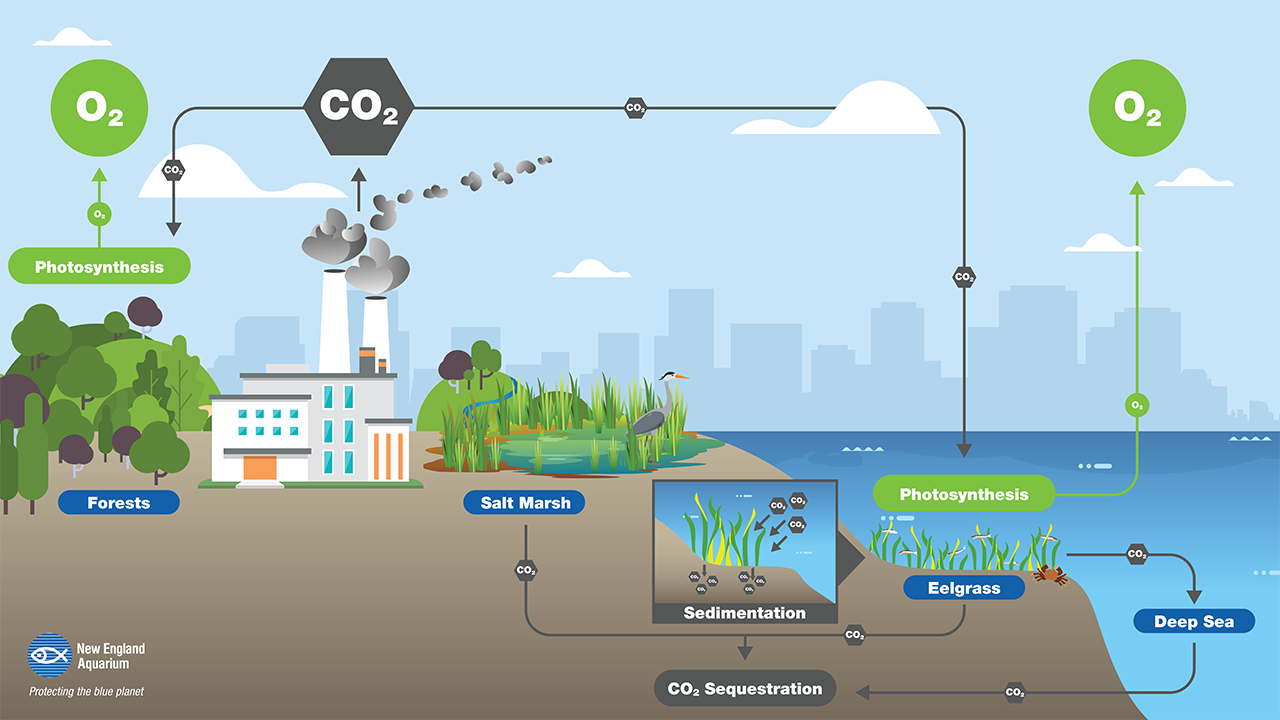
Blue carbon ecosystems capture emissions
Mangrove trees, seagrass, and salt marsh grasses grow in these coastal ecosystems and photosynthesize and absorb carbon. Research shows that they also trap carbon from sediment in the water, which gets stored in the soil. Because of this, coastal ecosystems can capture up to ten times as much carbon as forests, can do it at a faster rate, and if left undisturbed, can sequester, or hold that carbon for tens or even hundreds of years.
Scientists with the Environmental Protection Agency (EPA), together with a community of regional stakeholders, have been working to study blue carbon in eelgrass meadows and salt marshes around New England. Their work has shown that these ecosystems act as a “filter,” taking in organic particles from outside the meadow or marsh and collecting them into the sediment. By analyzing the soil in these habitats, scientists can measure how much carbon is being sequestered.
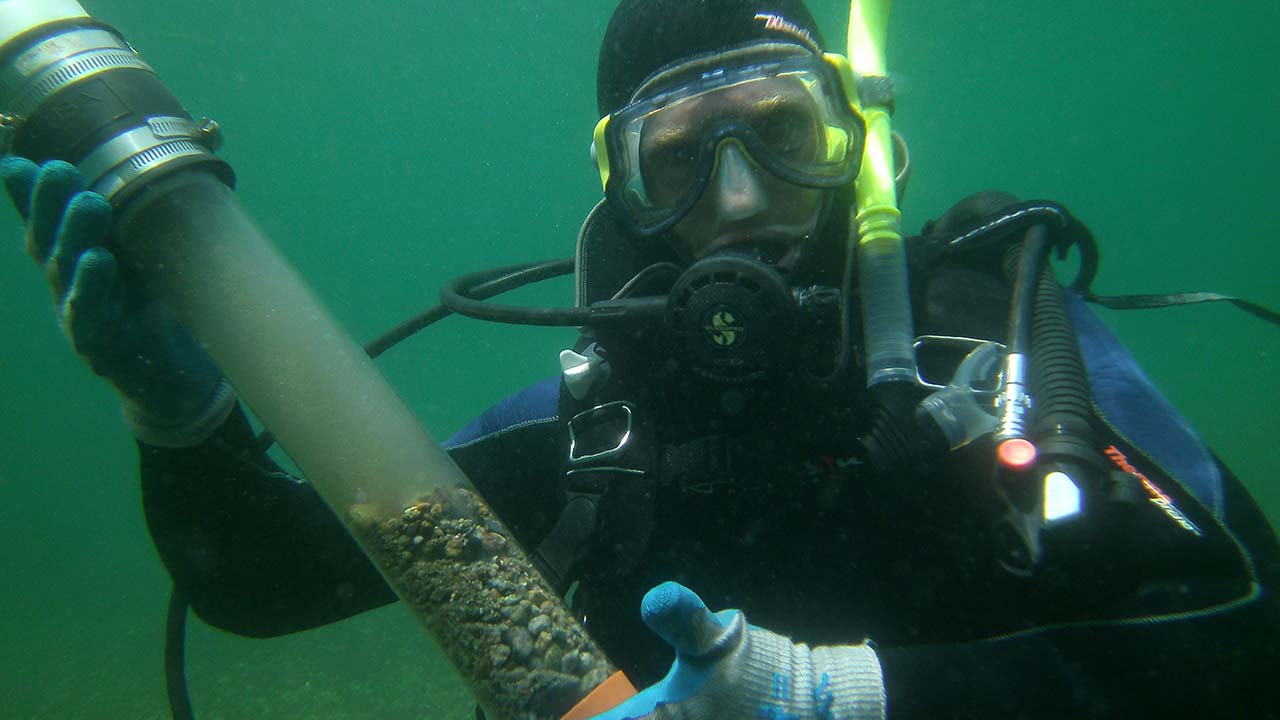
Coastal ecosystems need our help
Research shows that blue carbon ecosystems can play a major role in the fight against climate change. However, several challenges from human activities—including development, agriculture, and pollution—threaten many of these important habitats. When these coastal ecosystems are disrupted, the large amounts of carbon they store get released back into the atmosphere, contributing to increased climate change.
Protecting and regenerating mangrove forests, seagrass meadows, and salt marshes can have benefits beyond blue carbon, too, creating more resilient coasts in the face of a changing climate and supporting diverse marine life. Coastal habitats provide protection for inland environments—buffering storm waves, preventing erosion, and minimizing flooding—all of which are more prevalent due to climate change. They also are home to many different marine species and act as a nursery for fish, supporting the biodiversity of the surrounding ecosystem.
If coastal and marine habitats can’t thrive, the ocean, coastal communities, and the climate are also at risk. That’s why the Aquarium is working with a diverse range of stakeholders on this triple-win solution that safeguards communities, coastal habitats, and the climate. We engage to promote ocean-friendly practices that conserve these ecosystems in Massachusetts and beyond. There are also steps that everyone can take to protect these coastal and marine habitats:
- Reducing fertilizer use
- Runoff of nutrients in fertilizer can cause harmful algae blooms that suffocate coastal habitats and other marine life.
- Boating responsibly
- Help preserve these ecosystems by staying in navigation channels and avoiding the use of propellers or anchors in coastal habitats that could disturb these carbon sinks.
- Voting for the ocean
- You can use your voice to support government officials, agencies, and policies that protect blue carbon ecosystems. For example, here in Massachusetts, the New England Aquarium is working with State Representative Giannino and State Senator Moran to advance bills that will help set natural carbon sequestration goals for the state
Learn more about supporting our work and additional actions you can take to help protect the blue planet!

